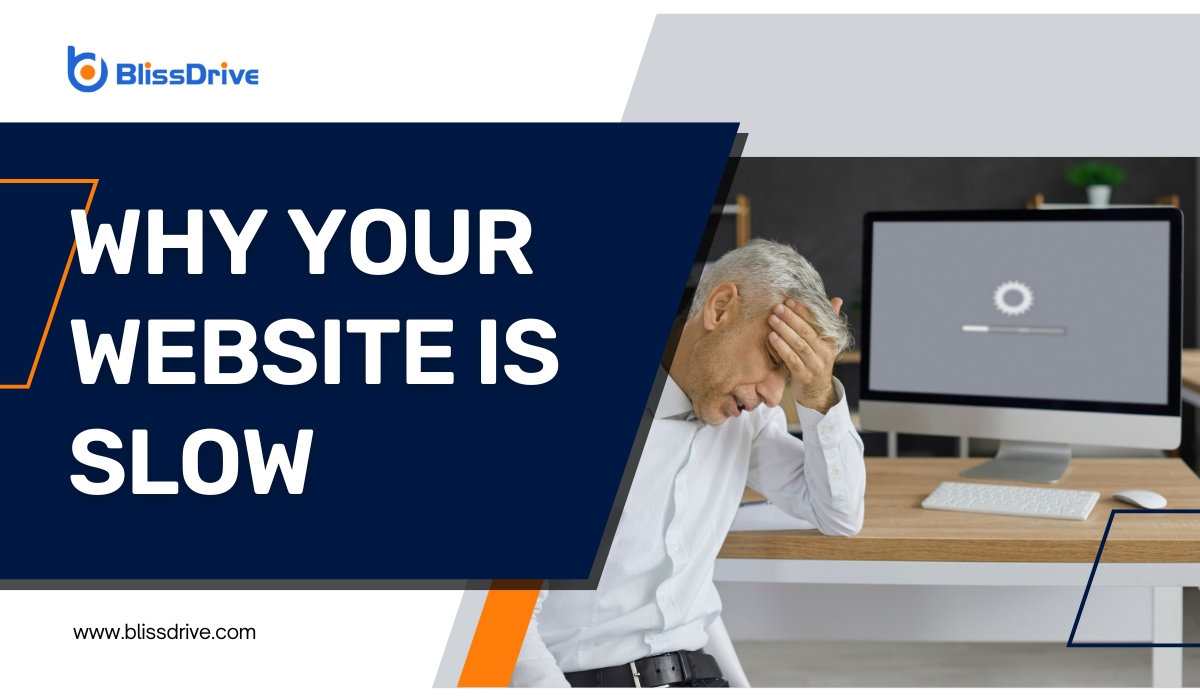Digital Marketing Services
Learn More About Us

Your website speed can slow down due to several factors. These include unoptimized images, using an insufficient server, and poor use of caching.
But did you know that a slow website can be a formula for disaster?
In fact, around 47% of website visitors expect a page to load in 2 seconds or less. Even a one-second delay in load times can cause a 7% reduction in conversions.
In this guide, we will discuss the ‘slow website issues’ in detail and explore solutions to speed up websites and keep the audience’s attention.
Images are an important part of web content. They increase user engagementThe level of interaction and involvement users have with social media content. and help convey information in a visual format.
Unoptimized images consume excessive bandwidth and increase page load times.
A sluggish website affects user engagementThe interactions that users have with a brand’s content on social media.. It leads to higher bounce rates and decreased conversions.
The audience also perceives slow websites as less trustworthy or professional. In the long run, this damages your brand’s reputation and online presence.
Each element of a webpage requires an HTTP request to load.
Too many requests can clog a website's loading process and slow the speed. This becomes especially problematic on pages with many elements.
Excessive HTTP requests result in a decline in user satisfaction. Visitors become frustrated with the wait time and abandon the pages. This leads to higher bounce rates and reduced engagement.
A Content Delivery Network (CDN) is a network of servers distributed globally. It offers fast content delivery by hosting copies at locations closer to your users.
This reduces the time it takes for your content to travel between the server and the user's browser.
Choose a CDN with a global network of servers. This ensures a nearby server is always available to deliver your content, regardless of the recipient's location.
Websites with growing traffic often remain on hosting plans that cannot handle the load. This leads to slow response times and frequent downtime.
Shared hosting is a cost-effective option. But, it can also be problematic as many sites use the same resources. When one site experiences a spike in traffic, it can slow down all others on the same server.
If your site traffic is increasing, upgrading from shared hosting to dedicated or VPS (Virtual Private Server) hosting may be time.
Inadequate caching means regenerating the same content for every request. Every time a user visits or refreshes the page, the server reloads all elements, including static content like stylesheets, images, and scripts.
Constant reloading increases load times, especially on slow connections.
Set up your website to tell browsers to keep certain files, like images and CSS files, before checking for updates.
When someone revisits your site, their browser loads these saved files, which speeds up the site and makes it appear more responsive.
Excessive or poor JavaScript slows down your website.
This happens because the browser needs to process all the scripts before it can render the full page.
Heavy web fonts can delay text rendering and page load times.
Using varying font styles and weights adds unnecessary bulk to your site.
Use only the required styles and weights.
Use a font-display swap in your CSS to ensure text remains visible during font loading. You can also use modern formats like WOFF2 for better compression and faster loading.
Overloading your website with too many plugins can slow it down.
Each plugin can add extra HTTP requests (for scripts and styles), increase the database load, and introduce inefficient code.
Too many plugins can also leadA potential customer referred by an affiliate who has shown interest in the product or service but h... to conflicts between them, further degrading site performance.
Review the plugins installed on your website. Remove those that are unnecessary or duplicate the functionality of others.
Ensure essential plugins are well-maintained and updated. You can also replace several plugins with one that combines several functions.
The average website takes around 8.6 seconds to load on mobile devices. This number exceeds the ideal load time for maintaining user engagement and satisfaction.
According to a study by Portent, a load time between 0 and 4 seconds is optimal for conversions. Yet, many websites fall short of this target, particularly on mobile.
Optimize your website's mobile version by compressing images and implementing adaptive image sizing. Add lazy loading to ensure that the server loads only the necessary resources.
Additionally, use Google's PageSpeed Insights to check your site’s mobile performance. Apply the recommended optimizations to enhance speed and user experience.
Improving your website's performance is crucial for retaining visitors and increasing conversions. By addressing common issues, you can reduce load times and improve user experience.
Monitoring and refining these aspects will keep your website fast, efficient, and appealing to your audience.
Need faster website performance? Contact Bliss Drive today for web design and optimization services to boost your site speed and conversions.
